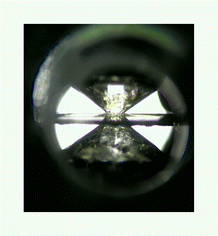Chemistry of materials under extreme high pressure-high-temperature conditions
Abstract
Most of our knowledge of chemistry is derived from experiments carried at the Earth′s surface, at pressures near one atmosphere. However, most elements and compounds in the universe exist under conditions of extremely high pressures, often combined with high temperatures, deep within the planets and stars. Under these conditions, new high-density crystal forms occur, species usually known only as molecules become dense covalent or ionic solids, and insulators and semiconductors become metals and even superconductors. Valency states and coordination numbers are changed, and it is expected that chemical bonding and reactivity is modified. Paul McMillan describes how the field of condensed matter chemistry under extreme high pressure conditions now represents a vast new area to be explored.


 Please wait while we load your content...
Please wait while we load your content...